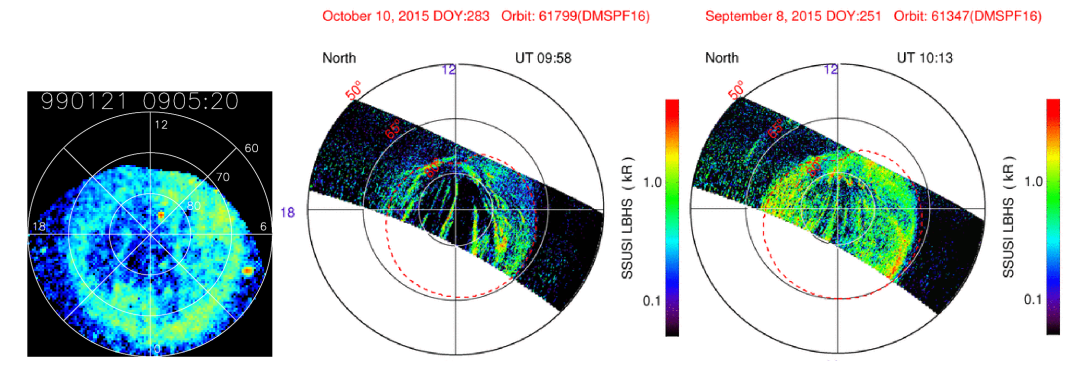Multiple polar auroral arcs: characteristics and magnetic source regions
The aim of this project is the study of Transpolar Auroral Arcs (TPAs)
The aurora is defined as the emission of light from the excitation of atmospheric neutral atoms by charged particles. This collision is the result of complicated mechanisms caused by the coupling of the solar wind, the terrestrial magnetosphere and ionosphere, leading to diverse auroral morphology and behaviour.
For planets such as Earth, auroras are found near the polar caps, forming what we call the auroral oval. Transpolar auroral arcs, as their name suggest, are auroral arcs that span through the polar cap and connect the dayside and nightside part of the oval. Those arcs converge towards the terrestrial cusp, the direct entry point of charged solar wind particles to the planet.

New generation UV imagers onboard low-altitude satellites allow for a more detailed study of auroras, thanks to their higher resolution and better luminosity sensitivity than previous global auroral imagers. Those new instruments have revealed a new picture of the state of the polar cap, showing that the simultaneous occurrence of multiple transpolar auroral arcs is far more common than previously understood. Such cases cannot be explained with the help of standard transpolar arc models.
In the project, we want to address the question of how and why multiple polar auroral arcs emerge and fill the polar cap.
Scientific questions concerning TPAs to be investigated include the following:
- What are the characteristics of multiple polar arcs?
- During what solar wind conditions do multiple polar arcs fill the polar cap?
- In what global state is the polar ionosphere when it is filled with multiple arcs?
- What is the state of the magnetotail lobes during multiple arc events?
- How are they connected to other dayside aurora phenomena, like the cusp aurora?
Funding agency: SNSA
